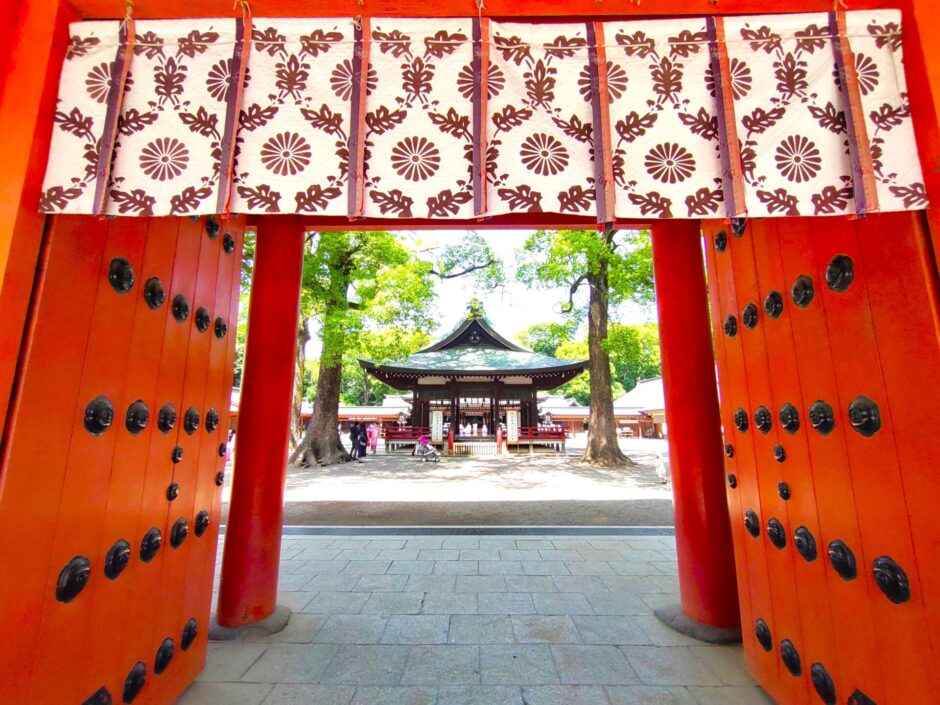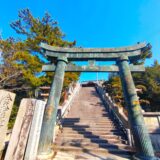目次
- 【Hikawa Shrine (Musashi Ichinomiya) summary】
- 【Hikawa Shrine (Musashi Ichinomiya) road approaching a shrine】
- 【Hikawa Shrine (Musashi Ichinomiya) precincts】
- 【Hikawa Shrine (Musashi Ichinomiya) Snake Pond Birthplace of Hikawa Shrine】
- 【Hikawa Shrine (Musashi Ichinomiya) Three regent shrines and ten end shrines】
- 【Hikawa Shrine (Musashi Ichinomiya) boulder formed from gravel and sediment】
- 【Hikawa Shrine (Musashi Ichinomiya) GOSHUIN】
- 【Hikawa Shrine (Musashi Ichinomiya) Nearby attractions】
- 【Hikawa Shrine (Musashi Ichinomiya) Access】
- Manager’s Comments
- Hikawa Shrine (Musashi Ichinomiya)
【Hikawa Shrine (Musashi Ichinomiya) summary】
Hikawa Shrine is the head shrine of about 280 Hikawa shrines located mainly in the Arakawa River basin. The shrine was founded in 472 B.C., and its history dates back to the time of the Japanese warrior Takemikoto’s expedition to the east, followed by prayers for victory by the founder of the Heike clan, Taira Sadamori, and others during his defeat of Taira no Masakado in the Jouhei Era, and then by Minamoto no Yoritomo during the Kamakura period (1185-1333), when the devastated shrine was reconstructed. The shrine has been deeply worshipped by the local people as a power spot since ancient times, and is a traditional shrine that has been prayed for the safety of the nation and the prosperity of the imperial family. The shrine has three deities. The three deities are Susano no Mikoto, the younger brother of Amaterasu, who controlled the Hii River in Izumo; his wife, Inadahime no Mikoto; and his son-in-law, Oonamuchi no Mikoto, the deity of Izumo-taisha Shrine.
【Hikawa Shrine (Musashi Ichinomiya) road approaching a shrine】
![Hikawa Shrine (Musashi Ichinomiya) [Saitama] DSC 0041 1024x768 - Hikawa Shrine (Musashi Ichinomiya) [Saitama]](https://japan-shrine.info/wp-content/uploads/DSC_0041-1024x768.jpg)
The Hikawa approach is the longest in Japan, extending more than 2 km from the road along the old Nakasendo Road to the main shrine.
![Hikawa Shrine (Musashi Ichinomiya) [Saitama] DSC 0045 1024x768 - Hikawa Shrine (Musashi Ichinomiya) [Saitama]](https://japan-shrine.info/wp-content/uploads/DSC_0045-1024x768.jpg)
The approach to the shrine is lush with about 650 zelkova and other trees. The trees on both sides used to be mainly zelkova trees, but many of them are old and sometimes fall down in typhoons, so they have been replaced by maple trees. There are many fashionable cafes along the approach to the temple, making it a good place for sightseeing.
![Hikawa Shrine (Musashi Ichinomiya) [Saitama] DSC 0035 1024x768 - Hikawa Shrine (Musashi Ichinomiya) [Saitama]](https://japan-shrine.info/wp-content/uploads/DSC_0035-1024x768.jpg)
After passing through the third torii gate, you will be in the grounds of Musashi Ichinomiya Hikawa Shrine.
![Hikawa Shrine (Musashi Ichinomiya) [Saitama] DSC 0028 1 1024x768 - Hikawa Shrine (Musashi Ichinomiya) [Saitama]](https://japan-shrine.info/wp-content/uploads/DSC_0028-1-1024x768.jpg)
After a short walk from the third torii gate, you will see a vermilion bridge over a pond. Beyond the bridge, you will see a bright vermilion tower gate.
![Hikawa Shrine (Musashi Ichinomiya) [Saitama] DSC 0004 1024x768 - Hikawa Shrine (Musashi Ichinomiya) [Saitama]](https://japan-shrine.info/wp-content/uploads/DSC_0004-1024x768.jpg)
A little further back from the water closet (near the entrance to the snake pond and directly behind the three regent shrines), there was a beautiful and impressive flower decoration.
![Hikawa Shrine (Musashi Ichinomiya) [Saitama] DSC 0078 1 1024x768 - Hikawa Shrine (Musashi Ichinomiya) [Saitama]](https://japan-shrine.info/wp-content/uploads/DSC_0078-1-1024x768.jpg)
The romon (tower gate) was built in 1940 together with the main shrine, the hall of worship, the dance hall, and the water closet. The bright vermilion color of this beautiful gate gives it a sense of dignity and majesty.
【Hikawa Shrine (Musashi Ichinomiya) precincts】
![Hikawa Shrine (Musashi Ichinomiya) [Saitama] DSC 0016 1024x768 - Hikawa Shrine (Musashi Ichinomiya) [Saitama]](https://japan-shrine.info/wp-content/uploads/DSC_0016-1024x768.jpg)
The Mai-den (dance hall), where kagura performances are held, stands in front of the gate.
![Hikawa Shrine (Musashi Ichinomiya) [Saitama] DSC 0011 1024x768 - Hikawa Shrine (Musashi Ichinomiya) [Saitama]](https://japan-shrine.info/wp-content/uploads/DSC_0011-1024x768.jpg)
The arrangement of the kaguraden in front of the main shrine and in the middle of the precincts of the temple is unusual.
![Hikawa Shrine (Musashi Ichinomiya) [Saitama] DSC 0006 Object Removal 1024x768 - Hikawa Shrine (Musashi Ichinomiya) [Saitama]](https://japan-shrine.info/wp-content/uploads/DSC_0006_Object-Removal-1024x768.jpg)
The name “Omiya” comes from the fact that Hikawa Shrine was praised as “the great palace” and that Musashi Ichinomiya means “the highest shrine in Musashi Province (Musashi Ichinomiya),” and the worship hall is simple but very splendid.
【Hikawa Shrine (Musashi Ichinomiya) Snake Pond Birthplace of Hikawa Shrine】
![Hikawa Shrine (Musashi Ichinomiya) [Saitama] DSC 0059 1024x768 - Hikawa Shrine (Musashi Ichinomiya) [Saitama]](https://japan-shrine.info/wp-content/uploads/DSC_0059-1024x768.jpg)
It may not be well known, but there is a small spring next to the main shrine building of Hikawa Shrine. It is said that this is where rice cultivation began and people gathered to worship this spring water, which is the origin of Hikawa Shrine. Originally, the shrine was a ❬forbidden site❭ and was inaccessible, but in recent years, a well-maintained path was built and visitors are now able to visit the shrine. There were no visitors, and the place surrounded by greenery was quiet and refreshing.
【Hikawa Shrine (Musashi Ichinomiya) Three regent shrines and ten end shrines】
![Hikawa Shrine (Musashi Ichinomiya) [Saitama] DSC 0048 1024x768 - Hikawa Shrine (Musashi Ichinomiya) [Saitama]](https://japan-shrine.info/wp-content/uploads/DSC_0048-1024x768.jpg)
Three regent shrines and ten subordinate shrines are located on the grounds of Hikawa Shrine, where gods and goddesses are enshrined, including the three goddesses Munakata (Munakata Shrine), daughter of Susanoo, Kurainatama no Mikoto (Inari Shrine), parents of his wife Princess Kushi-Inada (Monkakujin Shrine), his brother Oyamatsumi no Mikoto (Yamagumi Shrine), his grandson and family deity of the Tokugawa family, Oyamakui no Mikoto ( Oyamakui no Mikoto (Matsuo Shrine), the family deity of the Tokugawa family, and other deities are enshrined here.
![Hikawa Shrine (Musashi Ichinomiya) [Saitama] DSC 0052 1024x768 - Hikawa Shrine (Musashi Ichinomiya) [Saitama]](https://japan-shrine.info/wp-content/uploads/DSC_0052-1024x768.jpg)
From the side of the three regent shrines, you can see a beautiful view of the sacred pond and the Goshinbashi Bridge from the Snake Pond. Turtles were gathered on the rock in the middle and ducks were swimming. Perhaps because there is so much nature, wild birds are often seen.
【Hikawa Shrine (Musashi Ichinomiya) boulder formed from gravel and sediment】
![Hikawa Shrine (Musashi Ichinomiya) [Saitama] DSC 0032 1024x768 - Hikawa Shrine (Musashi Ichinomiya) [Saitama]](https://japan-shrine.info/wp-content/uploads/DSC_0032-1024x768.jpg)
On the left after passing through the third torii gate, you will find a small stone that appears in the lyrics of Japan’s national anthem, “Kimigayo. It is made of limestone that has been dissolved by rainwater over a long period of time, and the resulting milky liquid has condensed into pebbles and formed one large lump of rock. Because of this, it is believed to be a stone in which a divine spirit dwells, as it grows over a long period of time.
【Hikawa Shrine (Musashi Ichinomiya) GOSHUIN】
![Hikawa Shrine (Musashi Ichinomiya) [Saitama] 2024 05 19 14 42 Office Lens 776x1024 - Hikawa Shrine (Musashi Ichinomiya) [Saitama]](https://japan-shrine.info/wp-content/uploads/2024_05_19-14_42-Office-Lens-776x1024.jpg)
【Hikawa Shrine (Musashi Ichinomiya) Nearby attractions】
Omiya Park, Railway Museum, Nakayama Shrine, Hikawa Jyotai Shrine, Chou Shrine
【Hikawa Shrine (Musashi Ichinomiya) Access】
Manager’s Comments
There are many places of interest within the precincts of the temple, and many auxiliary shrines and subordinate shrines. It would be more enjoyable if you know the history of each shrine before you visit. Also, there is Omiya Park beyond Hikawa Shrine, which is famous for its cherry blossoms, so it is a good idea to visit there in the spring as well. Although it is usually not that crowded, it gets very crowded during Hatsumode (New Year’s visit) and Hanami (cherry blossom viewing) season, so be sure to know where to park in advance.
1-407 Takahana-cho, Omiya-ku, Saitama-shi, Saitama 330-0803
※Parking lot for worshippers available
 Tour of Japanese shrines and temples
Tour of Japanese shrines and temples 

![Hikawa Shrine (Musashi Ichinomiya) [Saitama] DSC 0094 150x150 - Hikawa Shrine (Musashi Ichinomiya) [Saitama]](https://japan-shrine.info/wp-content/uploads/DSC_0094-150x150.jpg)
![Hikawa Shrine (Musashi Ichinomiya) [Saitama] DSC 1100 150x150 - Hikawa Shrine (Musashi Ichinomiya) [Saitama]](https://japan-shrine.info/wp-content/uploads/DSC_1100-150x150.jpg)
![Hikawa Shrine (Musashi Ichinomiya) [Saitama] itsukushimajinja1 150x150 - Hikawa Shrine (Musashi Ichinomiya) [Saitama]](https://japan-shrine.info/wp-content/uploads/itsukushimajinja1-150x150.jpg)
![Hikawa Shrine (Musashi Ichinomiya) [Saitama] DSC 0851 2 150x150 - Hikawa Shrine (Musashi Ichinomiya) [Saitama]](https://japan-shrine.info/wp-content/uploads/DSC_0851_2-150x150.jpg)

